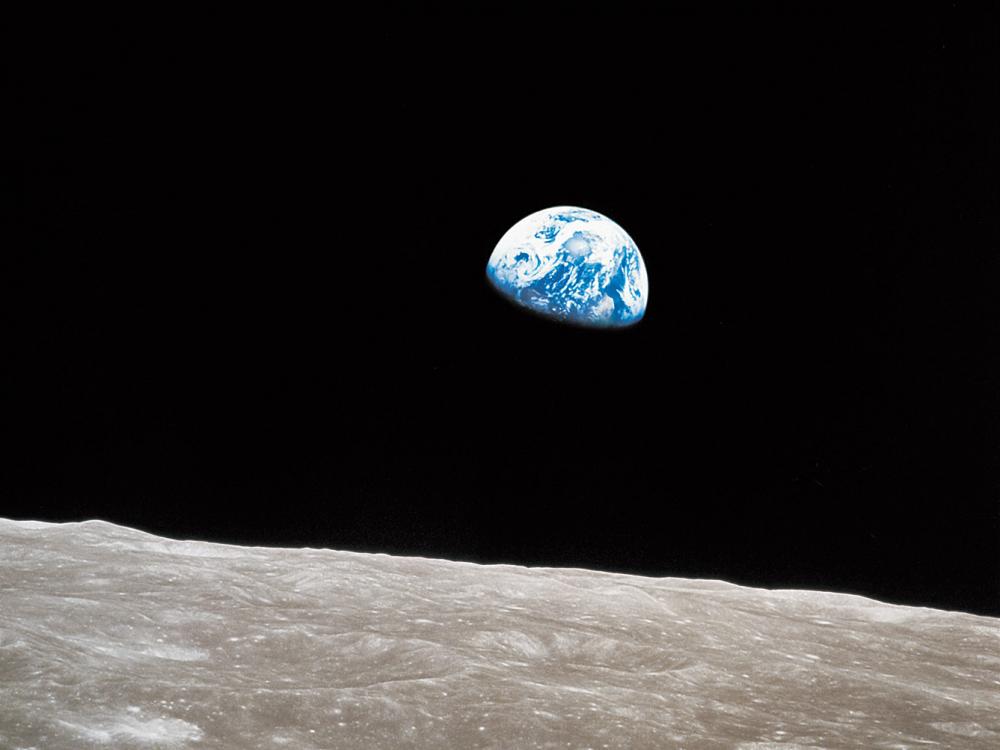
50 Years of Earth Day: Why This Anniversary Matters
Apr 22, 2020

Apr 22, 2020
How do you think of Earth Day? As a lyrical call, speaking to a sense of – even longing for – human interconnectedness and connection with our planetary home? As a day to pay closer attention to changes in one’s own local surroundings, whether to its environmental degradation or improvement?
Or, perhaps, as an occasion to reenergize efforts to understand the myriad complexities of Earth as a physical system—in which we ourselves, collectively, are a vital force?
Since the first Earth Day in 1970, these threads have been central to environmentalism as a social movement—and to the meanings we have attached to it. In the years surrounding the first Earth Day, this intertwining of themes, often expressed in soaring language, came from a range of activists, writers, and artists. Even government bureaucrats joined in. At that moment, in a burst of presidential and congressional action, the National Oceanic and Atmospheric Administration (NOAA) and the Environmental Protection Agency (EPA) became governmental fixtures and the National Aeronautics and Space Administration (NASA) invigorated its research in Earth sciences.
One might highlight any number of quotes to convey that period’s mood and outlook, but one of my favorites is by famed anthropologist Margaret Mead, when she served as the 1978 chairperson of Earth Day. She reflected that “Earth Day is the first holy day which transcends all national borders, yet preserves all geographical integrities, spans mountains and oceans and time belts, and yet brings people all over the world into one resonating accord, is devoted to the preservation of the harmony in nature and yet draws upon the triumphs of technology, the measurement of time, and instantaneous communication through space.” Lyrically, indeed spiritually, Mead’s words stood as a mirror to the moment, emphasizing a pan-global view of humanity’s relationship to its home world. A view that undoubtedly drew inspiration from emotionally evocative NASA images of Earth from space, notably 1968’s Earthrise and 1972’s Blue Marble.
Not everyone, of course, put such harmony and accord in the foreground, especially in 1970. A Washington Post editorial offered a grimmer assessment, suggesting that participants in Earth Day events “will be looking at the American air, land, and water that has become in less than 200 years the world’s most expensive monument to pollution—but a monument that threatens to topple of its own weight.”
The conversation between such narratives might seem contradictory, but it was complementary—one only vigorously promoted harmony (however defined) in the human relationship with the world if it were under siege as a result of humanity’s own actions. To the present, these narratives remain an enduring feature of public dialogue. But embedded in them was a key question alluded to by Mead and that early 1970s set of federal initiatives to heighten environmental and Earth science research: How might deeper knowledge of Earth as a physical system (and our role in it) enter into our moral and political choices about the environment?
Through the last 50 years that question has had two deep consequences. One has been to set in motion a systematic study of not only “the American air, land, and water” but of the entirety of the planet through a sustained, multi-decade body of work. Our knowledge now, compared to 1970, is vastly richer and more nuanced—an accomplishment critically reliant on a series of space-based scientific platforms that have studied the Earth in increasing detail. As we move forward with our ongoing renovation of the Museum, that important story will be featured in several exhibitions, including One World Connected, scheduled to open in late 2022.
Artist rendering of the upcoming One World Connected exhibition.
The other enduring consequence is how this very hard-earned knowledge changes the dialogue on choices confronting us. The scale and (seeming) speed of changes to Earth’s basic systems—warming atmosphere, rising ocean levels, melting glaciers—documented through research raise the urgency for human action to counteract these profoundly consequential human-generated impacts. Such understanding has made public discussion more informed but also more fraught, nationally and internationally. How, after all, does one address a literally planetary scale problem of many interlocking parts? Should we be fearful or optimistic on our future possibilities? What changes in our way of life might need to be made? Who will bear the burden? As to our response, might a large number of local responses (such as redesigned coastal cities) add up to a globally better future? How do people in different places, with different resources, live in the new condition that is emerging? The answers are not fully known. But we know we need the science to shape possible answers.
Mead’s evocation of “people all over the world” aligning “into one resonating accord” seems distant—whether or not such accord is even desirable or necessary. Yet the Smithsonian is trying. To recognize the 50th anniversary of Earth Day, it is holding an Earth Optimism Summit, available to all online. As with that first Earth Day, consider using this occasion of the 50th as a “teach-in” and a moment to reflect on where we have been and what we might do moving forward to confront one of the most fundamental challenges of our shared future.

We rely on the generous support of donors, sponsors, members, and other benefactors to share the history and impact of aviation and spaceflight, educate the public, and inspire future generations. With your help, we can continue to preserve and safeguard the world’s most comprehensive collection of artifacts representing the great achievements of flight and space exploration.
We rely on the generous support of donors, sponsors, members, and other benefactors to share the history and impact of aviation and spaceflight, educate the public, and inspire future generations. With your help, we can continue to preserve and safeguard the world’s most comprehensive collection of artifacts representing the great achievements of flight and space exploration.